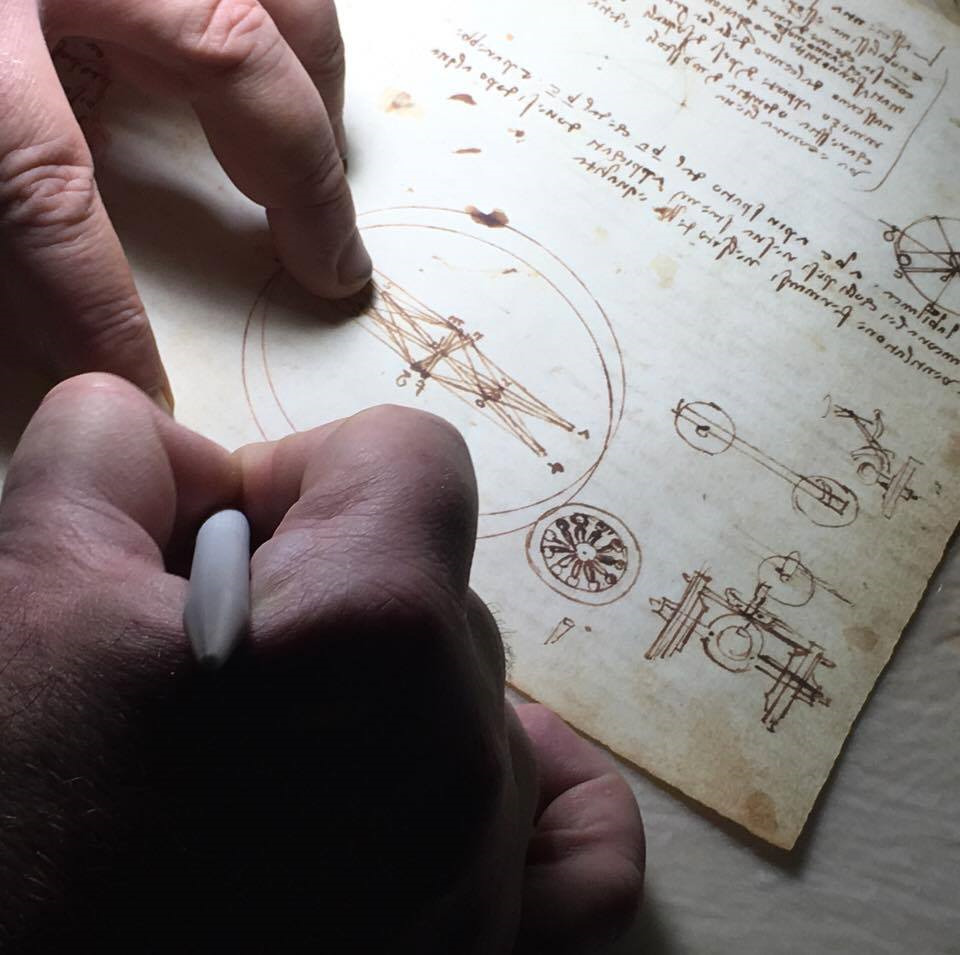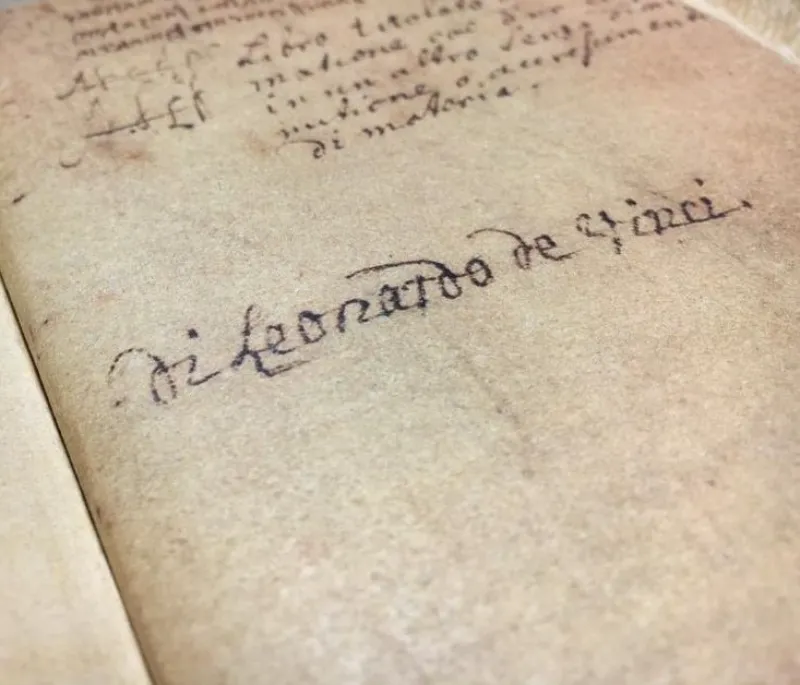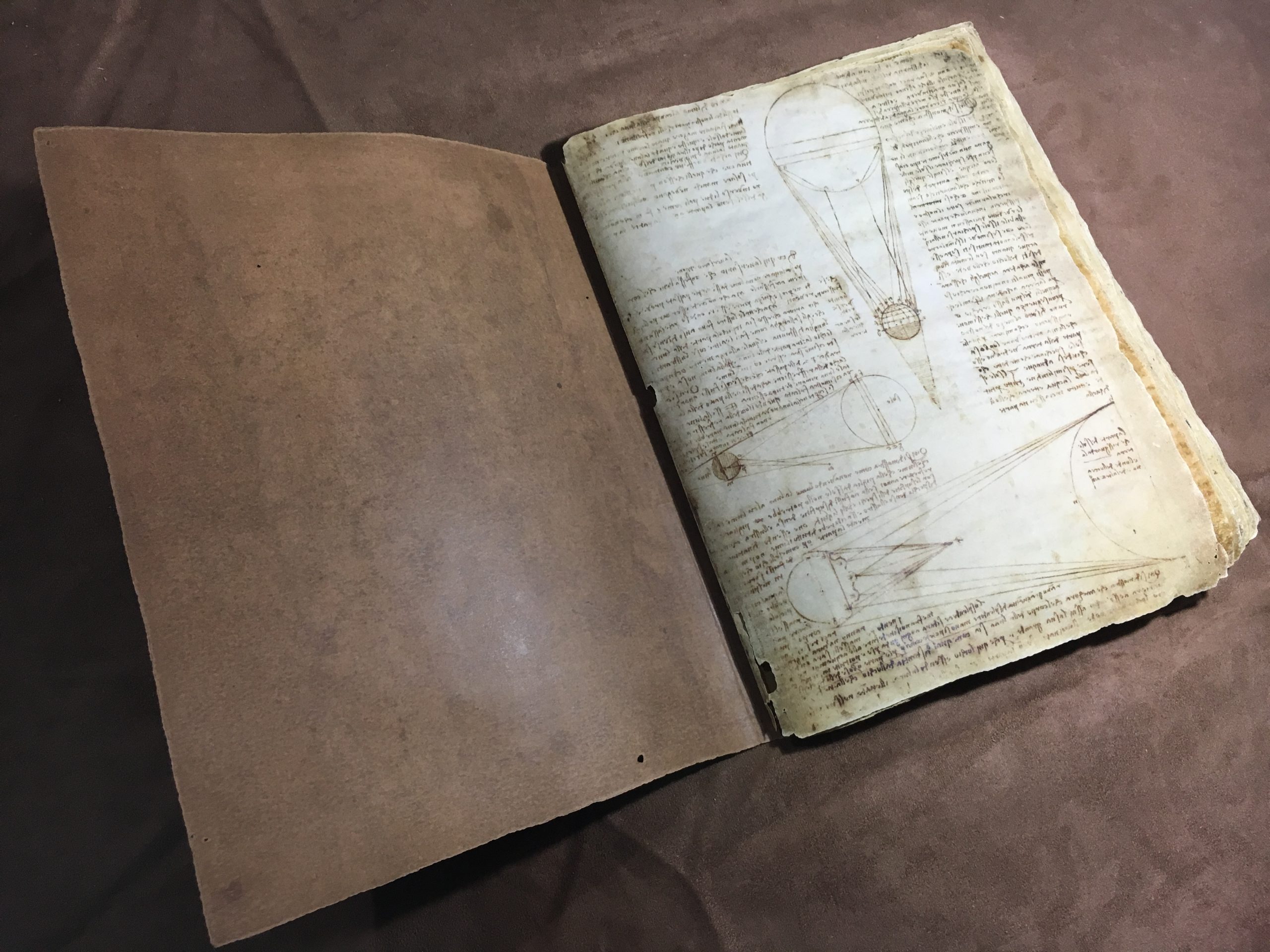
About Us
The notes that Leonardo wrote in his manuscripts includes, as we all know, multiple areas of interest: from anatomy to astronomy, from geology to physics, from geometry to war machines, from architecture to even much more.
After years of research, Apocrifa da Vinci managed to create in his laboratory a catalogue of reproductions of Leonardo da Vinci’s manuscripts. These reproductions are entirely hand-made using the paper sculpting technique and then enriched by precious commentaries and handcrafted leather boxes.
Alessandro Tartaglione and his partners developed an exclusive procedure that allows to replicate by hand every detail of every code sheet, replicating in detail all the aspects of the originals.
About Us
The notes that Leonardo wrote in his manuscripts includes, as we all know, multiple areas of interest: from anatomy to astronomy, from geology to physics, from geometry to war machines, from architecture to even much more.

After years of research, Apocrifa da Vinci managed to create in his laboratory a catalogue of reproductions of Leonardo da Vinci’s manuscripts. These reproductions are entirely hand-made using the paper sculpting technique and then enriched by precious commentaries and handcrafted leather boxes.
Alessandro Tartaglione and his partners developed an exclusive procedure that allows to replicate by hand every detail of every code sheet, replicating in detail all the aspects of the originals.
Paper Sculpture
The pictorial work, despite the exceptional quality of the results, is made up of a small number of paintings and frescoes both due to historical contingencies, which saw Italy in the second half of the fifteenth century traversed by bloody clashes and political instability which forced many artists to move often uncomfortable and hasty, both for a personal working method, marked by constant research and an in-depth study that comes close to that dissatisfaction that distinguishes, almost par excellence, the modern artist wuth a continuous hand to the brush.
Historical Backgrouds

From Leonardo’s whole creation we still have to this day more than 5000 pages of notes, written with his unique specular handwriting, which was oriented from right to left. After Leonardo’s death, his large quantity of writings, which can be considered the most considerable of the Renaissance, was subjected to many vicissitudes. As a matter of fact, both the appearance and the current partition of the manuscripts aren’t the original ones of when Leonardo was alive or even when they were passed down to Francesco Melzi, his loyal disciple.After Melzi’s death in 1570, his heirs started to spread his material. They didn’t understand how valuable the manuscripts were, reason why they initially kept them in an attic and then sold them to friends and collectors for a very low price




